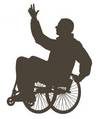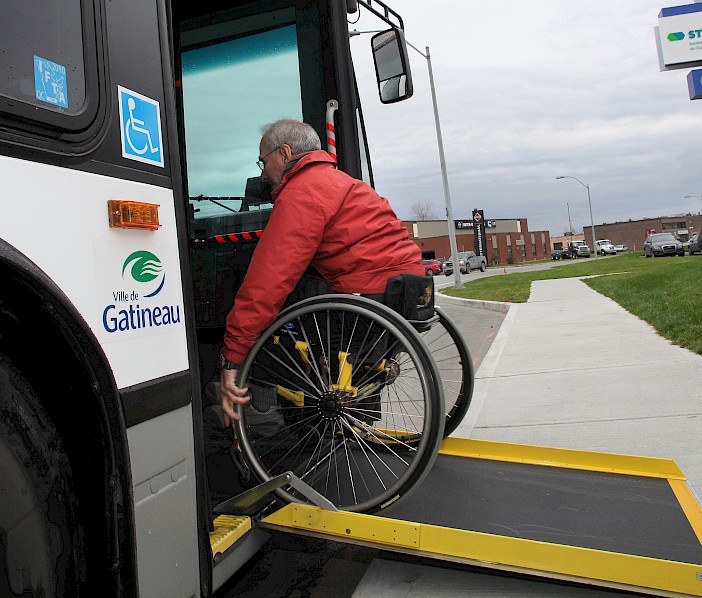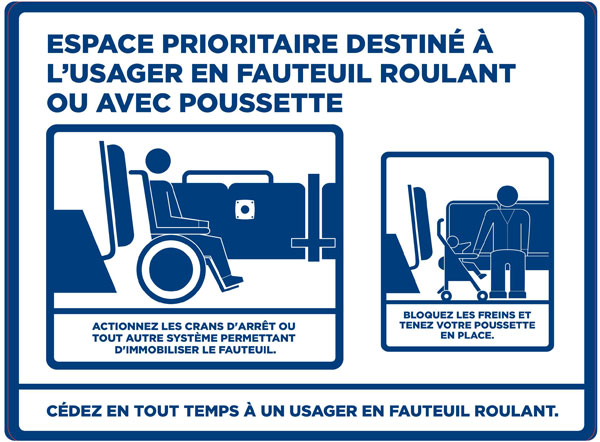How wheelchair users take the bus
A few tips to help wheelchair users take the bus on the regular system.
1. Plan your trip
Get a itinerary adapted to your needs. Under “Service Options” select “Accessible”.
The transit app also shows whether the stop and trip are accessible.
Do you know how to identify an accessible stop and an accessible bus?
- At the stop – boarding the bus
Clearly signal your intention to board
- The stop must be accessible. (Infos pratiques / Accessibilité/Identifier les Arrêt accessible)?
Clearly signal your intention to board
- The stop must be accessible.
As the bus approaches, clearly indicate your intention to board. The driver will position the bus to enable the access ramp to extend to the sidewalk.

Safe extension of the access ramp
Stay approximately 2 metres from the front door to give the access ramp room to extend safely. Wait until it is completely extended before you board.
Although we aim to offer the access ramp service at all times, this may not be possible if there is too much snow or ice at an accessible stop.
Boarding
Board right after all the other riders.
For safety reasons, the bus driver must at all times remain at the wheel.

You must be able to board and install yourself on your own, with or without an attendant. In order to familiarize yourself with the access ramp, we recommend you be accompanied the first time you use it.
3. The trip
Reserved spaces on the bus
There are reserved spaces for riders in wheelchairs. Currently, regular buses have 1 space and articulated buses have 2 spaces. The new buses being added to our fleet all have 2 reserved spaces.
These reserved spaces can also be used by riders with strollers, but riders in wheelchairs have priority.
If the reserved space is already taken by another rider in a wheelchair, you can still take that bus as long as you are able to:
- board on your own using the access ramp;
- fold up your chair and take a seat on your own;
- arrange your chair on your own so that it does not impede the movement of riders;
- at all times control your chair; and
- disembark on your own.
You can also wait for the next accessible bus.
The driver is instructed to stop at the stop, let you know if all of the spaces are taken, and contact STO central dispatch to ensure that a space will be available on the next bus.
If the reserved space is occupied by a rider with a stroller, that person must yield the space to the rider in a wheelchair.
If the bus is full and riders are standing, you can board the next accessible bus.
Positioning in the reserved space

You must:
- arrange your chair with the back to the entrance, facing the back of the bus;
- back the chair against the support cushion; and
- action the restraints or some other system to hold the chair in place.
Safety tips:
- attach your chair using the safety strap;
- hold onto the handrail; and
- straighten the front wheel for greater stability (scooter).
4. Disembarking
Well before your stop, use the blue stop signal button on your left to let the driver know that you would like to disembark. This will enable the driver to properly position the bus.
The driver will wait until the other riders have disembarked before extending the access ramp.
You must wait until the bus has come to a full stop before detaching yourself and heading to the front door.
